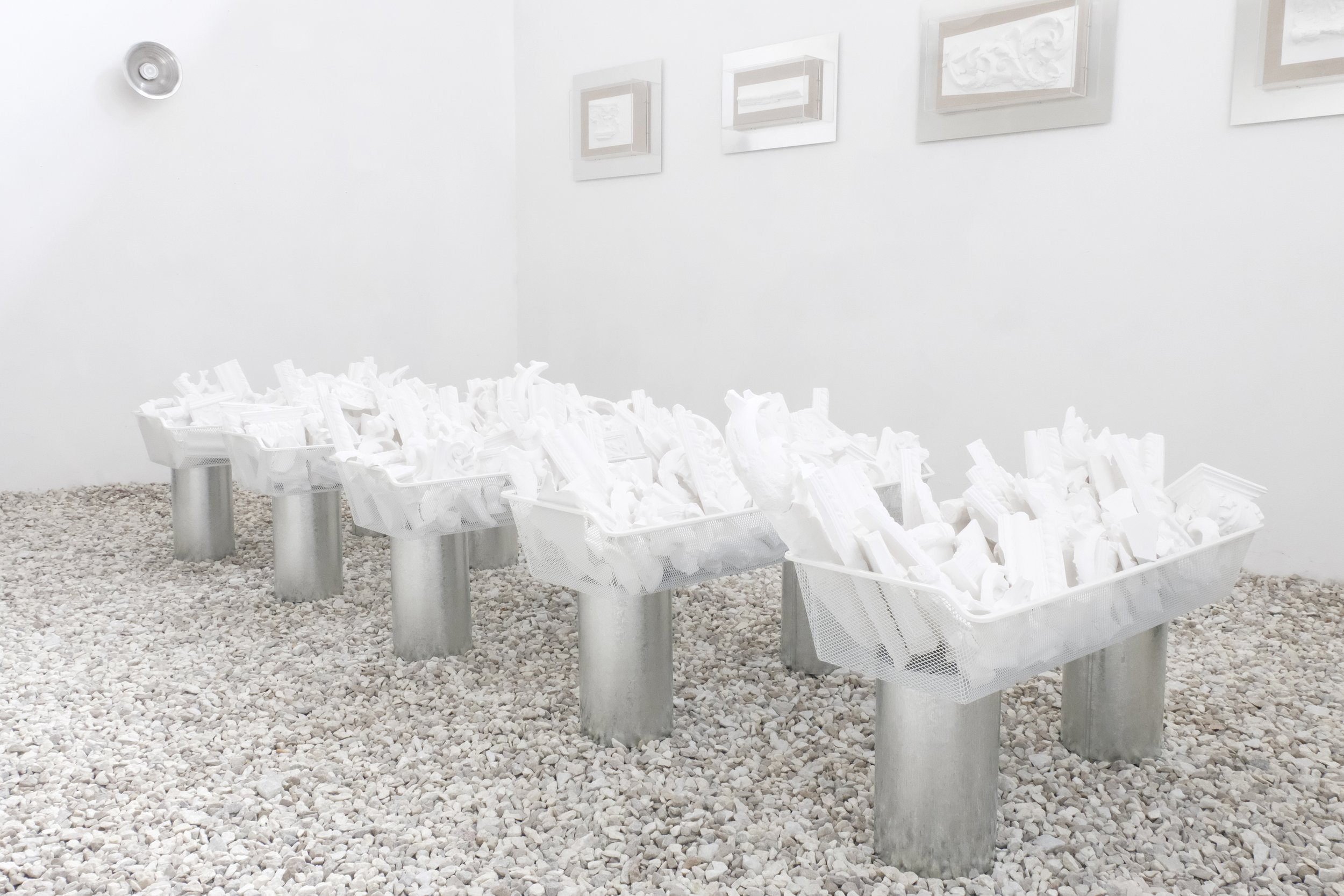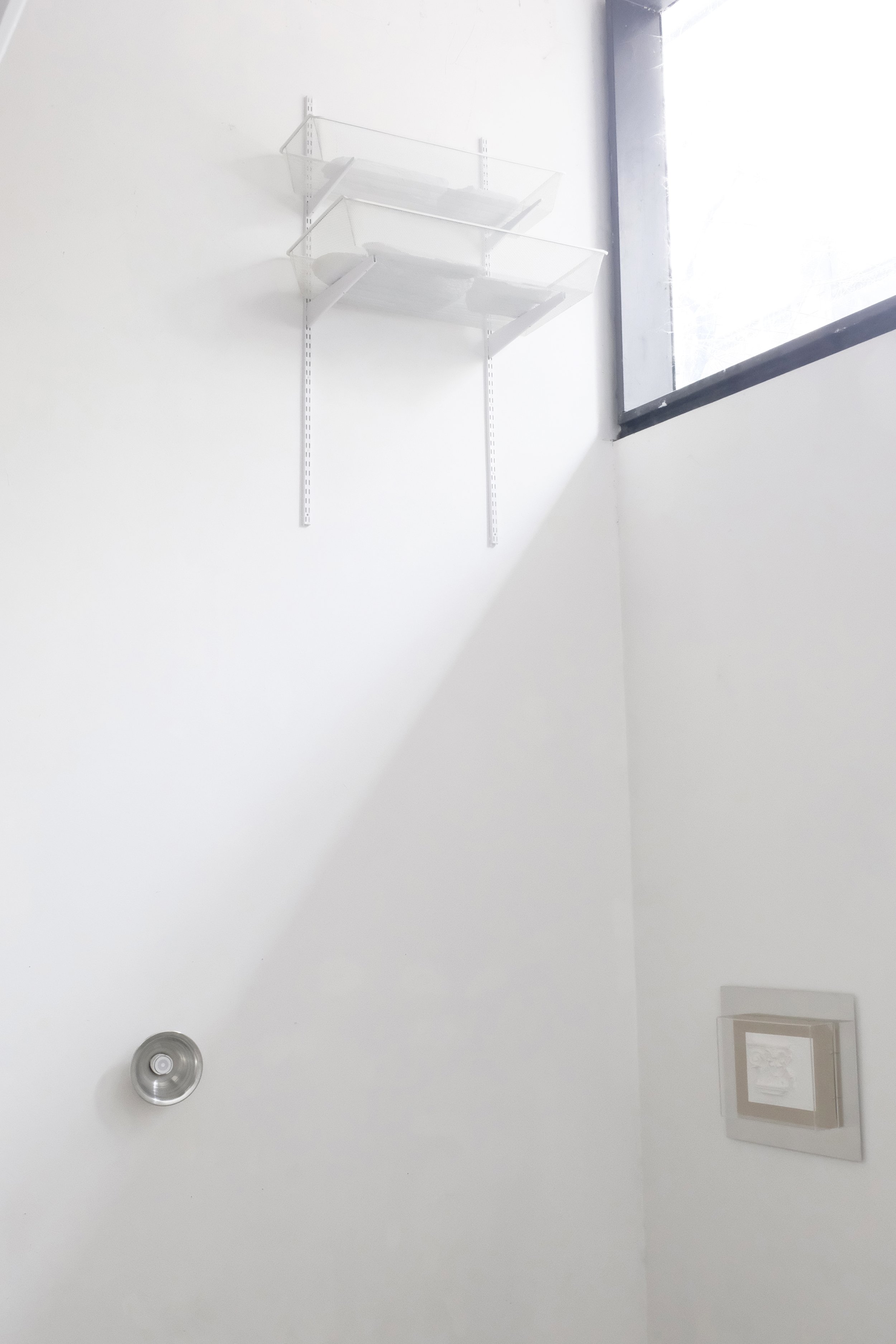
Detritus in White
Personal history is full of folds, wrinkles that hide elusive but recurring memories. No one escapes from their own lineage because the past continually returns, in the form of an inescapable presence or an indecipherable enigma. When faced with the insistence of genealogy, there are those who decide to escape. Some get lost in the labyrinth of subjectivity, while others exercise the task of repair. There is where we find Dane Palmieri.
Detritus in white is a chronicle about identity. The installation works as a linking process between elements that make up a memory retrieval system. Each fragment reveals a time segment of an extended exercise in restoring a particular wound. In his work, the anecdote becomes a backdrop that gives meaning to the set of objects that simulate an impersonal distance. Tensioned between the public and the private, the fragments of classical architecture confront us with the intimacy of his own family album. Behind the white of the moldings, there is the vestige of a body that seeks to be rebuilt.
The son of a sculptor, a researcher of classical architectural ornaments, and a salesman of industrial products, Palmieri's childhood passes between molds and copies of architraves, scrolls, friezes, and containers meticulously arranged with screws, fasteners, and pipes. Suddenly he loses his mother and his childhood home, which the bank repossesses and does not provide the time necessary to protect and safeguard a lifetime of belongings.
Today, his work is an exercise in reconstruction: each object is the product of the few molds he inherited. Five recreations hang pristine on the wall, in the manner of museum objects, inside transparent boxes. They are accompanied by five baskets containing clusters of patiently disorganized fragments. Like the weight of family ancestry, the original matrices rest above our heads, tucked away in the upper baskets, sheltered from the threat of a new loss.
The artist configures a mechanism of repair with the sole desire of tirelessly reproducing the ruined pieces. In this act of healing, it brings them back to the present. Daughters of their mother's womb, each reproduction invokes an exercise in understanding what presently survives of that family legacy. Like portraits from the same clan, no piece is the same as another.
Facing an emotional and chaotic past, Dane Palmieri invokes a system of control and exacerbates a demand for care as tension, as instruction, as order, as vigilance. The delicacy of the installation demands immobility: do not look, do not touch, do not speak: the reconstruction process requires unconditional surrender.
Detritus in White, 2021
Quimera Gallery
Buenos Aires, Argentina
Text by Laila Calantzopoulos







